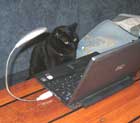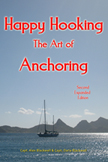Volvo Ocean Race - the most extreme of the ocean racing events - comes to NY
The start of Leg 7 to the Lizard in England was just off Battery Park, at the tip of Manhattan and almost in the shadow of the Statue of Liberty on May 11, 2006 at 1300 hours.
- Leg 6 – Annapolis to New York – Start 7 May 2006, start time: 1300, estimated date of arrival 9 May 2006
- The course length is approximately 400nm
- The fleet exits the bay through the gap in the middle of the 18 mile or so of steel and concrete that makes up Chesapeake Bay Bridge
- The fleet leave the Statue of Liberty to port and enter the Hudson River, cross the finish line and it’s all over
So where is the excitement? Where is the press build up? The most amazing fleet is coming to New York next week, and there is no information on the NYYC website, there is no information at MYC or North Cove Yacht Harbor as of April 28 that we could find. The whole fleet will be berthed there for a layover day. What's going on? Isn't NYYC responsible for the harbor start on the 11th? Why haven't they posted anything that might get people out in the harbor to see the fleet off. Is New York City that aloof? Are they that worried about delays? What's the deal?
Look at Baltimore and Annapolis. They've raised millions around this event with a Chesapeake Bay harbor leg, a concert, a huge party - and they don't even get any wind down there. We get plenty of wind up here this time of year and a harbor race could have been viewed by countless people from the Manhattan skyline towers. Portsmouth England is gearing up for a huge stopover welcome.
Sorry guys. Looks like no real glory here in New York City. We'll be there cheering you on, just the same.
For Leg 7 start information at the Volvo Ocean Race website, click here.
To check the webcam at North Cove where the boats will be berthed starting about May 9, click here. Then click on Web Cams.
For news from Baltimore and Annapolis, click here.
For news from Baltimore, click here.
Click here to view photos from NYC.
From the Wall Street Journal
By G. Bruce Knecht
New York Harbor
What a ride!
As we left Annapolis and headed toward the starting line for the sixth leg of the Volvo Ocean Race early Sunday afternoon, I was looking forward to a rapid sprint to New York City on ABN AMRO ONE, which had won four of the five previous legs of the extraordinary 32,000-nautical-mile around-the-world race. It didn't turn out that way.
Mike Sanderson , our skipper, who is universally called "Moose," had told us there was the potential for heavy weather before the start. "We're going to have a pretty hellish night," he said during a pre-race briefing. "Between 2 and 4 a.m. on Monday, we could have 50 knot gusts." He asked the 10-man crew to fight hard. "We have a couple of days to sleep in New York , so let's give it hell for the next 30 hours." But he also issued a caution: "The most important thing is getting there in one piece. We have a lot to lose: If we break the boat and can't start in the next leg, that would be a total disaster."
At the start of the race, the sun was shining and the wind was calm, about eight knots, making for a perfect day for the thousands of spectator boats that had come out to watch. But the wind was too gentle for "Black Betty," as ABN AMRO ONE's crew calls its 70-foot rocket of a yacht. With its relatively wide hull, it performs best in heavy weather. As a result, the six other boats left us behind as the fleet headed south to the mouth of the Chesapeake Bay , and by late afternoon two of them had disappeared into the distance.That all changed Sunday evening when we were two thirds of our way down the Chesapeake and the wind picked up to 23 to 26 knots. With a push of a button, the 21-foot-long keel canted to the side, enabling us to keep the boat relatively upright in spite of the force of the wind. Betty soon reached a speed identical to the wind's. It was as if someon eignited booster engines to hurtle us out to sea. By the time we crossed under the Chesapeake Bay Bridge and entered the Atlantic Ocean shortly after midnight , we had passed four of the other boats.
But that's also when the real trouble began. The wind speed exceeded 30 knots and a series of squalls buffeted us with 42-knot winds. Worse, the breeze was coming from the north, the direction we wanted to go. That meant Betty was repeatedly climbing waves that were unseen except for the frothing white at their peaks and then falling into the trough on the other side, a scenario that causes fragile composite-hulled racing boats to break.
Remarkably, this was the strongest wind the crew had sailed into throughout the entirety of the seven-month race. They had occasionally seen stronger breezes, but this was the first time such heavy wind was on the nose. During the early hours of Tuesday morning, Black Betty's deck became a war zone as the crew battled rain and stinging sleet to reduce the size of the sails we were flying. The bowmen, Jan Dekker and Justin Slattery, had the toughest tasks. Twice they had to change our headsail - wrestling each sail down to the deck, keeping track of lines in the darkness and hoisting replacement sails while the hull crashed off the waves and tons of water washed over the deck.
No one slept until after 7 a.m. Even then, it was only for catnaps and no one bothered to take off their foul-weather gear or boots when they lay down on their bunks or on the floor. They knew that another sail change would require "all hands on deck.
"There's nothing like the Volvo (or the Whitbread, as it was known until Volvo took over the sponsorship reins in 2001). The current edition began when seven yachts set out from Spain and headed south last November. After a stop in Cape Town , South Africa , the yachts entered the treacherous Southern Ocean and circled much of Antarctica , making stops in Australia and New Zealand , before heading back north to Rio de Janeiro and then up to the Chesapeake . I'm only onboard for this one leg, but it's easy to see how grueling the race is. The conditions onboard - from the uncomfortable bunks to the open toilet and freeze-dried food - are Spartan, and the work is constant. The only place to be is either on deck or lying down in the carbon-fiber black cabin. The only place to sit is the swing-like seat where Stan Honey , the navigator, works with a pair of computers and weather information to plot the optimal course.
Black Betty can reach incredible speeds. Earlier in the race, between Spain and South Africa , it sailed 546 miles in a single day. We couldn't reach anything like that speed while heading into the south-bound wind and waves. The wind direction also meant that we had to repeatedly tack back and forth. With each tack, we lost a quarter of a mile. And each turn meant that hundreds of pounds of gear had to be shifted from one side of the boat to the other. But we were doing better than our competitors. When we received data about the other boats' positions at 6 a.m. Monday, we learned that we were ahead of them all.
As the sun set Monday night, we were tacking back and forth up the New J ersey coastline, which was sometimes clearly visible. The wind was still strong, averaging 27 knots, and our lead expanded through the night. But our skipper, who had slept only a few minutes since the start, was not taking anything for granted even after we passed Ambrose Light and made our way toward the bright lights of the Verrazano Narrows Bridge and, beyond that, the Statue of Liberty . Only when we crossed the finish line near the southern tip of Manhattan at 4:06 a.m. and learned that the closest of the other boats still had 23 miles to go did Moose break into a smile. Shaking hands with everyone on his crew, he said, "Nice work guys - that was a real toughie of a race, so this is a particularly sweet victory."
Despite the hour, spectators and champagne were waiting on the dock, but the crew will not have long to savor its victory. The seventh leg, from New York to Portsmouth , England , begins tomorrow.
Mr. Knecht is a Journal reporter and the author of "Hooked: Pirates, Poaching and The Perfect Fish" (Rodale Books).
From the Baltimore Sun
Volvo Ocean Race plans a refreshing competition
On the Water -- Annie Linskey
Originally published February 19, 2006
The event that will set this year's Volvo Ocean Race apart from the previous competition is something called the "in-port race" - a sailboat contest in which spectators will get to see the fleet of seven 70-foot- long boats tacking back and forth as they race around a set of buoys.
"Nothing quite like this has happened on the bay," said Lee Tawney, who works for Ocean Race Chesapeake, which is organizing events for the Volvo race during its four-week stop in Baltimore and Annapolis. "It would be like having the America 's Cup here."
The race is set for 1 p.m. April 29. Organizers expect 3,000 to 4,000 spectator boats to be bobbing at the edges of the course to watch it, said Peter Craig , who will direct the race.
The course will be just north of the Bay Bridge , in a deep swath of water between the Magothy and the Chester rivers. "We needed to have it within striking distance of Baltimore and Annapolis," Craig said.
Finding a spot in the notoriously shallow Chesapeake that could accommodate the boats was not an easy task. The Volvo Open 70s draw almost 15 feet - which means they'll have to stick to the middle of the bay, where the depths are 20 to 40 feet. (Even along the edges of race, there are places where the Volvo boats would run aground.)
But Craig said his largest concern will be handling the thousands of spectator boats. Those crafts will need to stay clear of the race course. "It is like the middle of the football field," he said.
When the winds shift - as they often do on the Chesapeake - the race course will need to be adjusted. Moving the buoys is easy, Craig said, but making sure the spectator boats are clear of a shifting course will not be.
The Coast Guard will restrict the movements of all boats in the race area, That means a shipping lane will be closed during the race.
One concern about the course, however, is that it won't be easily seen from land, Craig said.
The race course is expected to be a simple "windward/leeward." That means the boats will need to round two buoys - one far to windward and the other downwind.
The race committee decides how many laps the boats need to make the day of the race - and that decision will be made based on the wind, Craig said.
annie.linskey@baltsun.com




